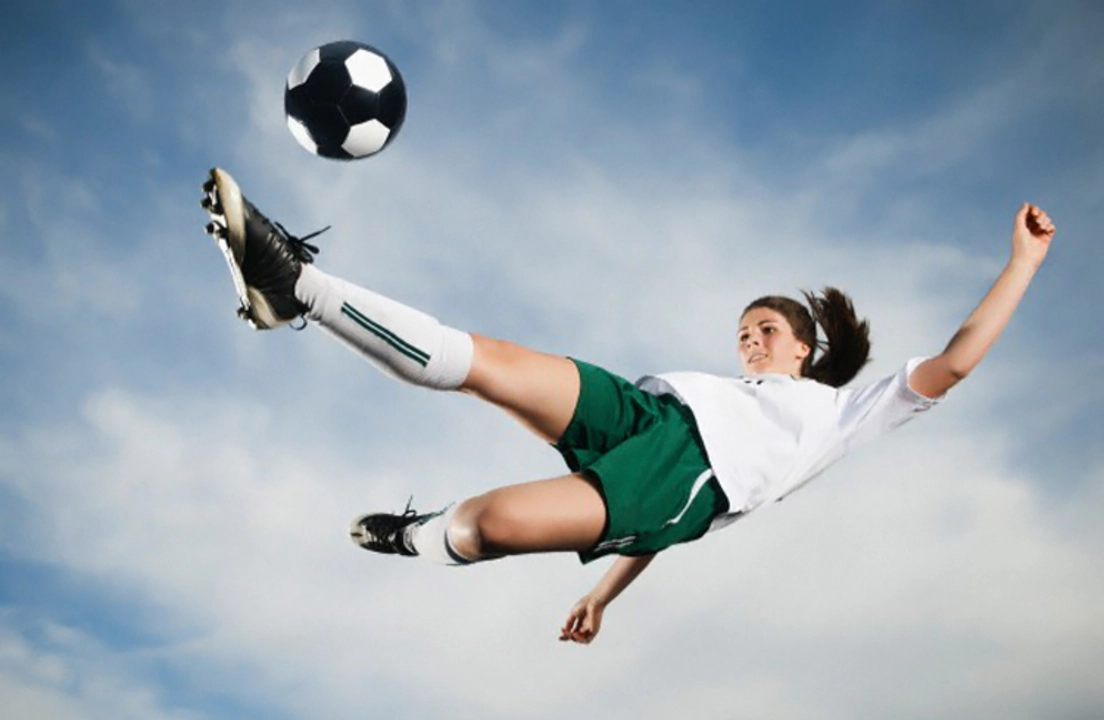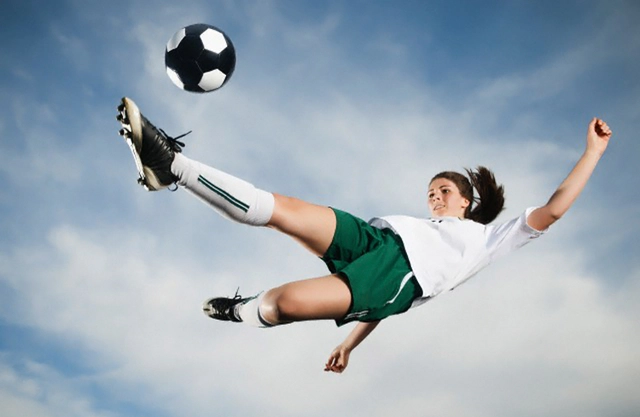The Science Behind Sally's Kick
When Sally kicks a soccer ball, several fascinating scientific principles come into play. To understand what happens to the energy involved in this action, we must first explore the concept of energy itself. Energy is the ability to do work, and work is done when a force is exerted on an object, causing it to move. In this case, Sally applies a force on the soccer ball with her foot, and the ball moves as a result. Kinetic energy, or the energy of motion, is the type of energy we'll be focusing on in this article. Throughout each section, we'll delve into various aspects of the energy transfer that occurs when Sally kicks the soccer ball.
The Role of Potential Energy
Potential energy is the stored energy an object has due to its position or condition. Before Sally kicks the soccer ball, it has potential energy due to its position on the ground. This potential energy is converted into kinetic energy when Sally's foot makes contact with the ball. The force of her kick determines how much of that potential energy will be converted into kinetic energy. The more forceful the kick, the greater the conversion of potential energy into kinetic energy. The ball's potential energy is also affected by its mass and the height at which it is kicked. As the ball's mass increases, so does its potential energy. Similarly, if the ball is kicked from a higher position, it will have more potential energy because there is more potential for it to fall and gain kinetic energy.
Conservation of Energy in Action
The principle of conservation of energy states that energy cannot be created or destroyed, only converted from one form to another. When Sally kicks the soccer ball, the energy from her leg muscles is transferred to the ball, transforming its potential energy into kinetic energy. This transfer of energy can be observed in the movement of the ball as it flies through the air. It's important to note that not all of the energy from Sally's kick is transferred to the ball; some of it is lost as heat due to friction between her foot and the ball, as well as between the ball and the air. However, the total amount of energy in the system remains constant, as dictated by the conservation of energy.
Newton's Laws and the Soccer Ball's Motion
Newton's laws of motion also play a significant role in understanding the energy transfer that occurs when Sally kicks the soccer ball. His first law, also known as the law of inertia, states that an object at rest will stay at rest, and an object in motion will stay in motion with the same speed and direction unless acted upon by a force. In our scenario, Sally's kick provides the force needed to overcome the ball's inertia and set it in motion.
Newton's second law states that the acceleration of an object is directly proportional to the net force acting on it and inversely proportional to its mass. In other words, the stronger the force of Sally's kick, the greater the acceleration of the ball. Additionally, the heavier the ball, the less acceleration it will experience from the kick.
Finally, Newton's third law tells us that for every action, there is an equal and opposite reaction. When Sally kicks the ball, the ball exerts an equal force back on her foot. However, since Sally's mass is much greater than the ball's, the effect of the force on her is much smaller, and she doesn't experience a significant change in motion.
The Impact of Air Resistance and Spin
Air resistance and the spin of the soccer ball also influence the energy transfer that occurs during Sally's kick. As the ball moves through the air, it encounters resistance from the air molecules it's pushing out of the way. This resistance, known as drag, acts in the opposite direction of the ball's motion and gradually reduces its kinetic energy. The shape of the soccer ball and the speed at which it travels greatly affect the amount of air resistance it experiences.
Additionally, if Sally imparts spin on the ball during her kick, this can alter the ball's trajectory and the way it interacts with the air. The spin creates a pressure difference between the sides of the ball, causing it to curve as it moves through the air. This phenomenon, known as the Magnus effect, can be used by skilled players to bend the ball's path and make it more difficult for goalkeepers to predict where it will go.
Energy Dissipation and the Ball's Final Resting Place
Eventually, the soccer ball will come to a stop, either by being caught, hitting an obstacle, or losing enough energy to resist the forces acting upon it. When the ball comes into contact with another object, some of its kinetic energy is transferred to that object, causing it to move or vibrate. The remaining energy is dissipated as heat due to the friction and deformation that occurs during the collision.
When Sally kicks the soccer ball, a complex chain of energy transformations takes place. By understanding the principles of energy conservation, Newton's laws of motion, and the impact of air resistance and spin, we can better appreciate the science behind the seemingly simple act of kicking a soccer ball.


Leave A Reply
Your email address will not be published